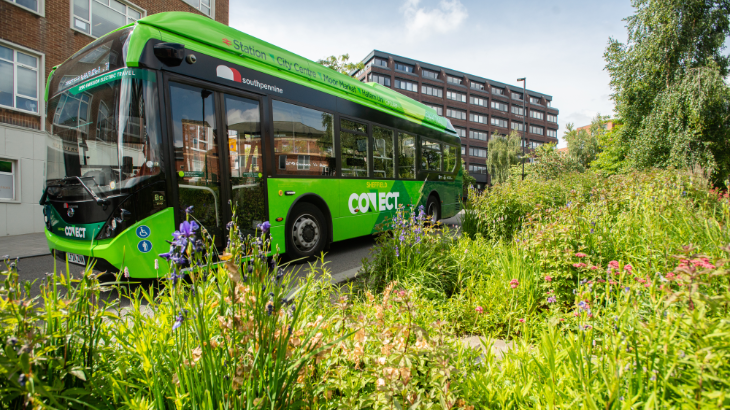Banging the Drum for Combined Authorities

Our Transport correspondent asks whether the interests of public transport could be better served by more centralisation.
No matter your political persuasion, it is undeniable that the Labour Party is now in power, having secured a substantial majority in the election on Thursday 4 July 2024. It is also undeniable that one of the ailments of recent years has been a disconnect between Westminster and local authorities. It is of little wonder that when we come to read election manifestos, we withhold our belief until results manifest themselves in the real world. We read words that we either hope for, or reject, and place our faith in the long-established system of British politics.
What then, does Labour’s manifesto mean for us in Northamptonshire, a county that has put 5 Labour MPs into the Commons? And how do we ensure that they represent us in the years to come? Looking through the manifesto I started to think about the following quote:
‘The country remains too centralised, with the economic potential of too many regions and communities ignored.’
Communities have indeed been ignored and Northamptonshire is one that, when it comes to public transport in any case, has suffered. We are often neglected when it comes to funding for our bus services for example.
In the case of transport, an overarching view of a network may better inform decisions than a localised one focussed on current boundaries. For example within local authorities the natural centres that people face toward are often neglected. We see this play out in West Northants with folk in the southwest seeing Banbury as more of a centre and folk in the northwest, Rugby. Two places that fall outside of West Northants jurisdiction. This can lead to a continual battle to sustain rural services within the wider framework of the unitary area. So, when Labour considers this next part of the manifesto…
‘Labour will give mayors the power to create unified and integrated transport systems, allowing for more seamless journeys, and to promote active travel networks.’
they may find it more complex when assigning to local authorities as opposed to Mayors who oversee large urban areas.
One question they might ask themselves is, contrary to the over-centralised message, are there places that would benefit from further centralisation?
I can certainly think of one example that Northamptonshire’s new crop of Labour MPs may take an interest in.

Looking at the map, Northamptonshire has several urban areas all within a reasonable distance of each other. However, these towns are divided by authority boundaries making the work of forming integrated transport services more difficult. We do not have a Mayor presiding over a combined authority yet we only look down the road to see that Cambridge and Peterborough, two places much further apart geographically, do1.
This area of Northamptonshire is already starting to grow. We have begun to see this play out with housing spreading out from locations such as Moulton, on the northeast boundary of Northampton, and heading up the A43 toward Kettering. The potential here for well sustained, commercially viable, public transport services is huge but, at present, we remain divided.
As I have pointed out, this isn’t peculiar to this part of Northamptonshire, there will be several other examples where a rethinking of the model in favour of a combined authority may benefit transport decisions. In all the examples however, for them to work there will have to be some brave calls made as to the nature of local authority over an area. It would also require a ‘banging of the drum’ (to borrow a phrase) for Northamptonshire so that Westminster pays attention to this long-standing issue.
